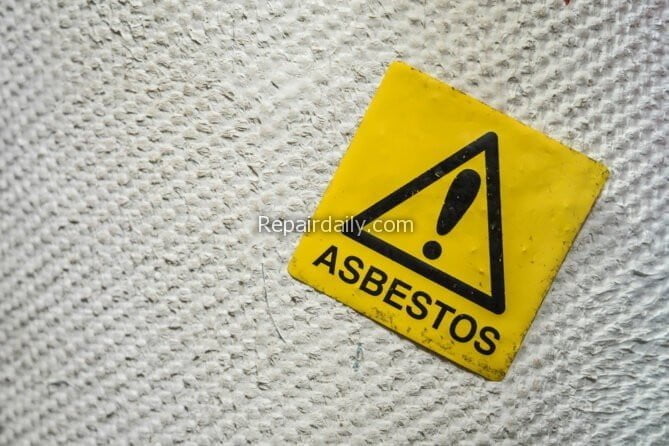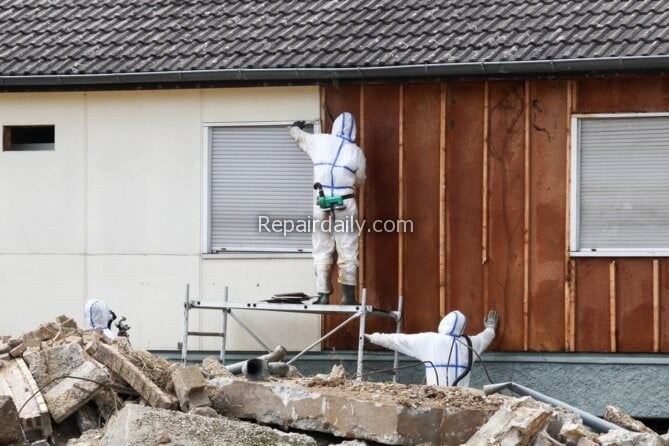
Asbestos was a common material in various types of buildings in the past. It’s a carcinogenic mineral that was found to be harmful and cause diseases, including cancer. Due to this, homeowners fear the chances of having asbestos in their homes. The main concern is the health issues it can cause and the costs involved in the removal process.
The material is likely found in old houses, especially those over 30 years old. Testing your home is essential because of the potential health risks that asbestos can cause. With this in mind, asbestos testing is worth considering. You can check out Atlas Laboratories and similar providers to ensure a good start in protecting your family’s health and the environment.

A Close Look At Asbestos
Asbestos has long been utilized for its durability as a mineral that naturally forms in rocks and soil. During the early years of its use in construction, it was incorporated into various building materials such as cement, adhesives, insulation, tiles, spray-on coatings, and roof or siding shingles, to name a few.
Initially, the mineral itself will not bring about the purported health concerns, but it becomes an issue once the microscopic fibers eventually escape into the air. This may occur as dust builds up during construction or renovation projects in which materials containing asbestos are present.
Reasons Why Asbestos Became Popular In Building Materials
Back in the early 1980s, asbestos continued to be widely used in various construction materials. Its durability, availability, and adaptability are some features that make it popular. The mineral is highly resistant to heat, fire, corrosion, chemicals, and water. Many manufacturers favor the mineral due to its protective properties.
As a naturally present mineral in nature, asbestos is widely available. Generally, obtaining the mineral was affordable, making it another favorite choice for manufacturers. Lastly, its adaptability is due to its microscopic fibers, which can readily combine with various materials and adapt to different applications.
From the late 1970s to the 1980s, the use of asbestos in building materials faced a steady decline because of the increasing awareness of exposure-related health hazards. In 1981, it was partially banned. However, asbestos isn’t completely forbidden, even with the restrictions on its use to limit potential exposure.
How To Identify If Asbestos Is Present In Your Home
Homeowners living in houses built before the 1980s should be concerned about the likelihood of asbestos-based materials. It’s crucial to remember that you can identify asbestos by looking at a material or product unless there’s a label that indicates that it contains asbestos. Having a sample tested is the best way to be certain.
If you’re living in a house built way back before the 1980s, a practical move is to call a professional to inspect your home. In case you discover crumbling insulation or holes in the drywall in your home, it may be best to obtain a sample for asbestos testing. It may be the right move due to their deteriorating state, which requires immediate repairs.
What Happens During Asbestos Testing?
The asbestos testing process is fairly straightforward, minimally invasive, and at an affordable price range. Generally, the testing for asbestos in a home typically involves the following:
- Pinpointing sources of asbestos: A professional will utilize specific equipment and identification techniques to determine where asbestos may be present in your home.
- Identifying asbestos: Upon figuring out the location of potential materials containing asbestos, the professional utilizes polarized light to identify and analyze the asbestos particles and determine the types present.
- Gathering samples: The professional will obtain a material sample for the actual asbestos testing. In most cases, it’s usually around a minimum of one square inch. Various methods may be employed to obtain dust, such as tape-lifting, micro-vacuuming, or scraping. Collecting the dust will help identify the amount of asbestos on a surface and will serve as a basis to determine if the mineral is present.
Depending on the company you hire, the asbestos testing results will be available in a few days, usually from two to five days. Performing asbestos testing can provide peace of mind knowing that you can safely proceed with a remodeling or renovation project.

What Happens During The Asbestos Removal Process?
If the asbestos testing turns out positive for the presence of the mineral in your home, the next recommended step is to start the asbestos abatement or removal process. Generally, it’s a comprehensive procedure for eliminating all sources of asbestos in your home.
Hiring a professional to handle the task is the best decision, from start to finish. Remember that doing the task can put you at high risk of developing asbestos-related health conditions. Moreover, the abatement process typically involves these steps:
- First step: Plan the proper removal of the mineral while the area is sealed off. The adjacent areas unaffected by the project will also undergo proper sealing to prevent the spread of asbestos. In most cases, it involves sealing the air ducts, covering all surfaces in plastic, and switching off the heating, ventilation, and air conditioning (HVAC) systems.
- Second step: Remove all materials containing asbestos using various tools and methods. Before the task starts, the professionals will wear protective gear and equipment along with air monitors. Sealed bags and containers with protective lining are necessary to ensure proper disposal of asbestos-containing materials. Professionals should be the ones to do this task since they have the right equipment to perform the steps safely.
- Third step: Use specialized vacuums and other methods to clean the site thoroughly. In most cases, it entails cleaning and using a vacuum with a high-efficiency particulate absorbing (HEPA) filter. Once the cleaning has thoroughly removed any indications of dust on all surfaces, a sampling test will be conducted by a third-party company to ensure that the amount of airborne asbestos is absent.
As you can see, removing asbestos from a property is relatively straightforward. In cases when total removal is not possible or practical, a professional may decide to seal or enclose them. Remember that the abatement process may not be necessary if materials containing asbestos are in good shape or will stay undisturbed.
What Happens If Asbestos Exposure Happens?
The asbestos fibers typically float through the air during a construction project that excavates old materials containing the mineral or when an old structure collapses. Most building materials in the past, including drywall and insulation, utilized asbestos for its fire-resistance properties before it was partially banned on the market. Moreover, certain jobs, such as in construction or industries such as firefighting or auto repair, may have exposed a person to asbestos for years.
Exposure to the mineral can bring about health conditions. As the miniature fibers are inhaled via the nose or mouth, they lodge into the lung’s lining and other organs. The exposure can occur for years, only to later discover that the fibers have already caused long-term irritation or damage, resulting in health conditions.
Is Single-Time Exposure Detrimental To Health?
Some known conditions that develop after asbestos exposure include mesothelioma, asbestosis, or lung cancer. The conditions can develop if a person is subject to a single-time exposure to the mineral. However, asbestos exposure should be significant enough to cause the fibers to lodge in the bodily tissues. For example, in the 9/11 attack, when the Twin Towers collapsed, it released an array of detrimental substances, including asbestos, into the air.
In most cases, just one instance of asbestos exposure is insufficient to cause health problems. In one situation, a person is less likely to experience health problems if exposed to a small number of particles.
Considerations For Homeowners Living In An Old House
Due to the widespread use of building materials containing asbestos, your home likely has asbestos, especially if it was built in the 1980s. As a homeowner, below are several considerations to keep in mind:
- If you plan to buy or move into a property, scrutinize every aspect of the house, including the plumbing and the attic.
- Observe the necessary precautions to avoid disrupting or damaging surfaces or materials likely to contain asbestos.
- Avoid dusting or vacuuming debris that’s likely to contain asbestos particles.
- Employ a professional’s services to remove or repair potentially asbestos-containing items in your home.
As you can see, materials or items containing asbestos cannot be avoided, especially for those living in an old house. Luckily, knowing these measures will help minimize possible exposure to the mineral.
Final Thoughts
Asbestos testing and removal are essential in keeping your home safe, especially if you’re planning a renovation project soon. Remember that the safe and proper removal of asbestos should be a priority for any homeowner. You should be aware of the necessary safety precautions when preparing to renovate a home constructed in the 1970s or 1980s, such as identifying materials containing asbestos and safely removing them before starting your project. If you prioritize proper asbestos testing, you can determine whether your home includes any asbestos-containing materials. This can help protect your family’s health, especially if you plan to remodel or renovate soon.
